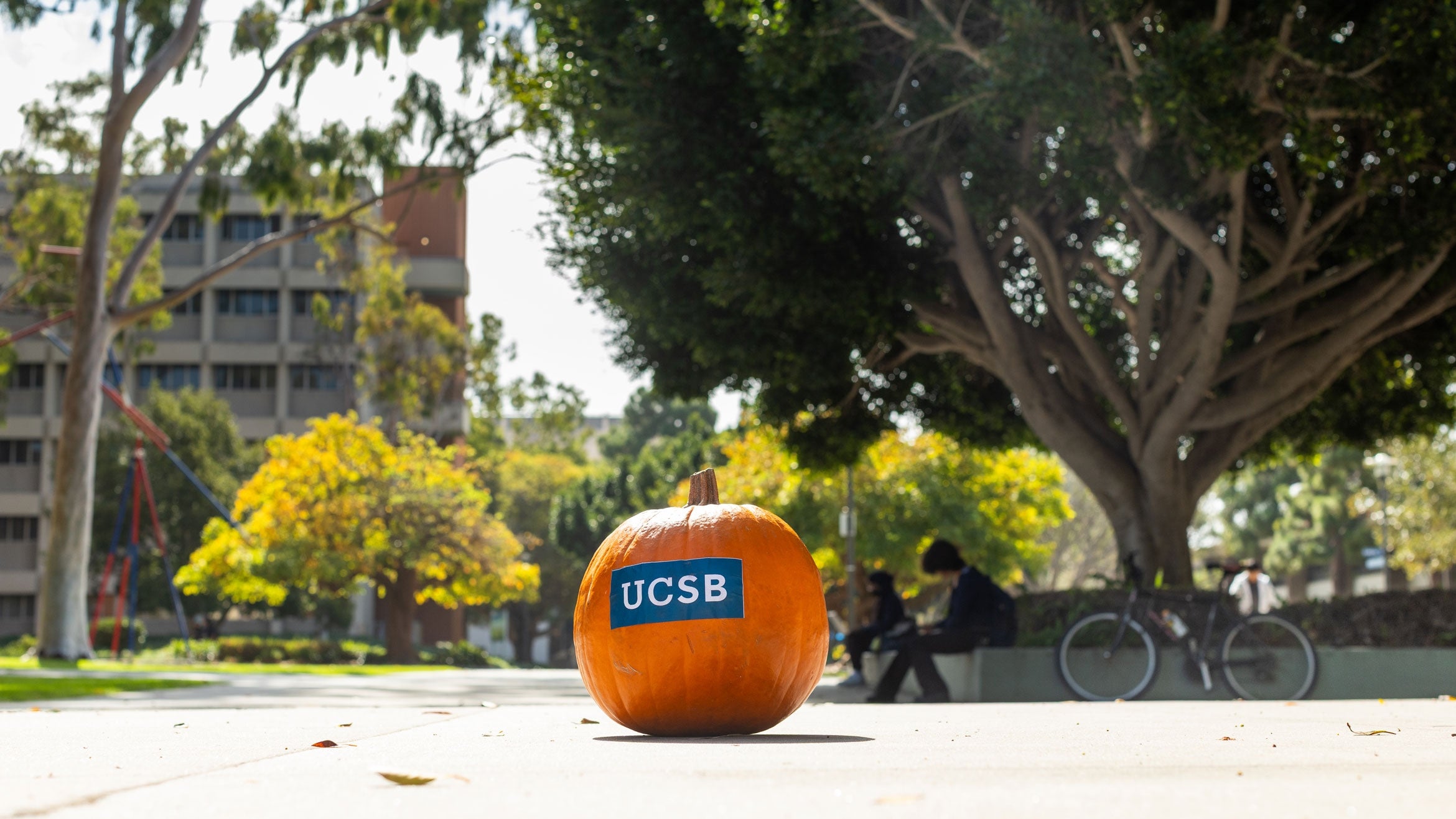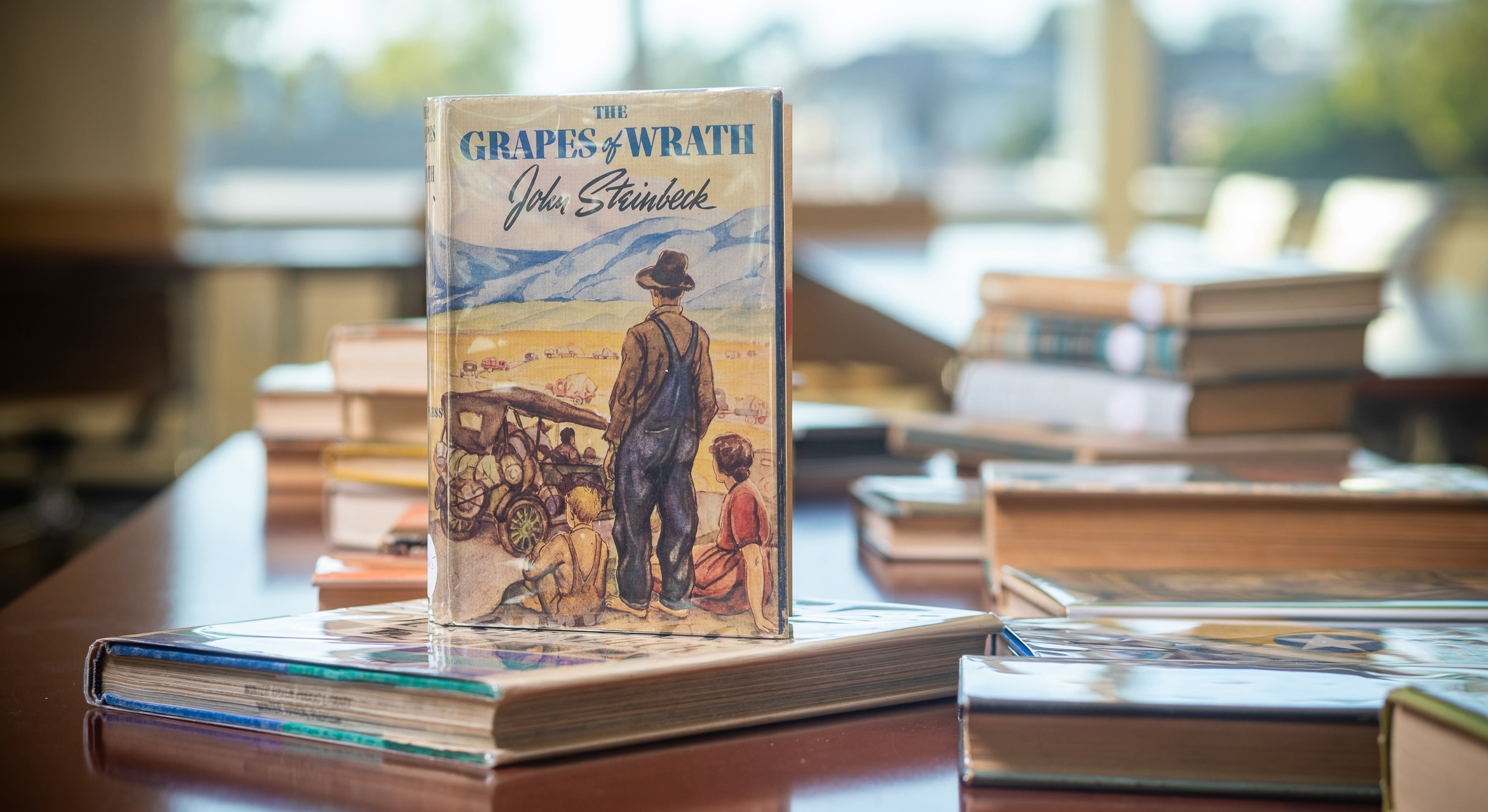
Trove of John Steinbeck first editions and audio recordings elevate UCSB Library archive
In the summer of 1974 at a garage sale in the Salinas Valley, the seed was sown for what would grow to become a vast and rare collection of John Steinbeck books and recordings recently donated to UC Santa Barbara.
It was there, in Steinbeck’s hometown and the setting of much of his most important fiction, where Mark Maxson, a UCSB undergraduate at the time, spotted a first edition of “The Winter of Our Discontent” in its original dust jacket. He paid $2 for it — and so began his decades-long fascination with collecting the Nobel Prize winner’s books and, more recently, audio recordings of speeches, early drafts and story ideas.
Dozens of hours of recordings and more than two dozen first editions representing Steinbeck’s major works are now archived at UC Santa Barbara Library. In late October, Maxson and his wife Mary Burchill — they met on the rowing team in 1972 and graduated in 1975 and 1976, respectively — dropped off the sizable trove on the third floor of the library’s Department of Special Research Collections, where the process has begun to digitize the recordings and make the books accessible to the public.
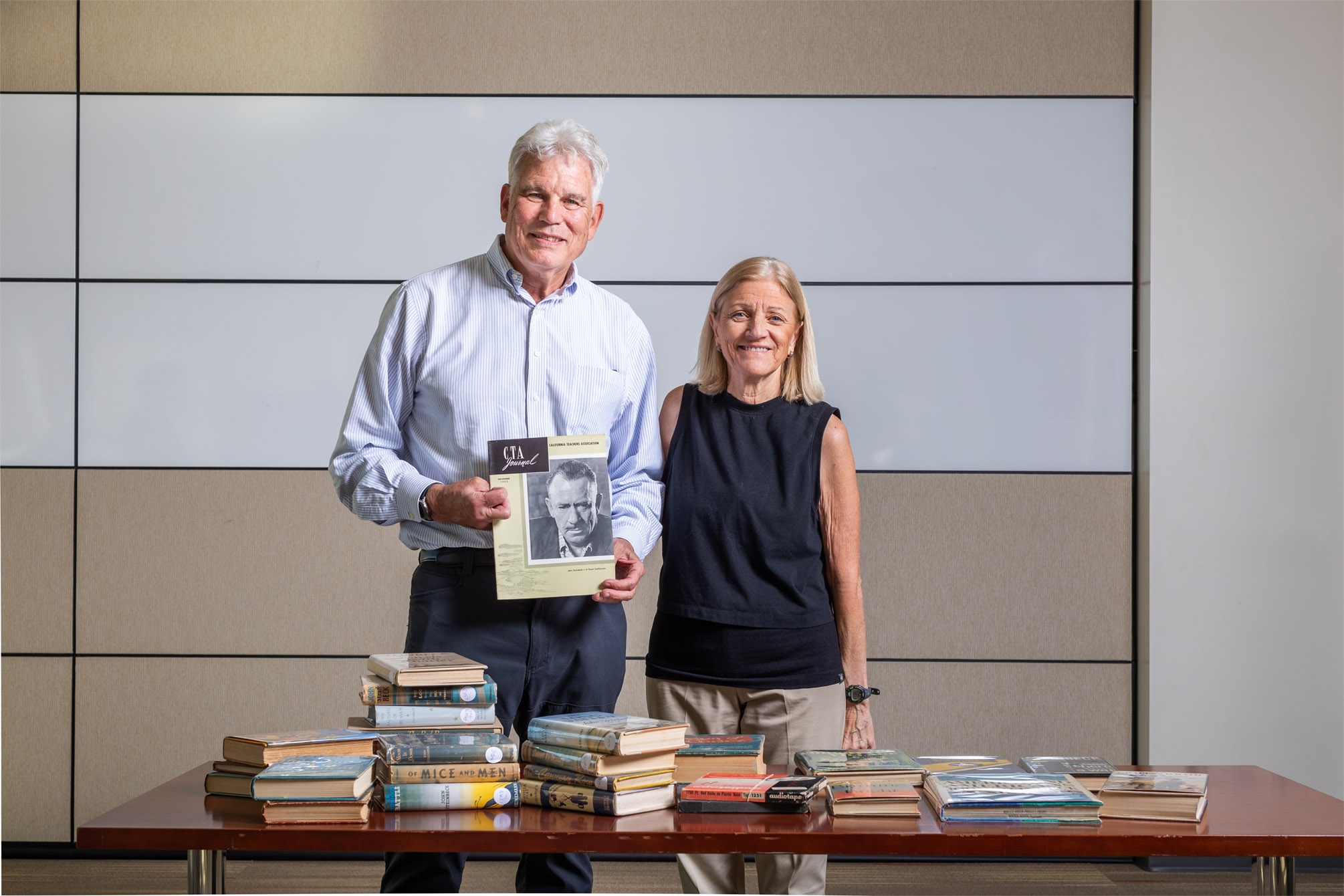
“Their donation really complements our existing Steinbeck holdings,” said David Gartrell, the special collections curator of rare books and manuscripts. “We have some later fine press editions of some of Steinbeck's work . . . and even uncorrected galley proofs of ‘The Grapes of Wrath,’ but we had very few true first editions in such fine condition. The volumes donated by Mark and Mary have been well cared for.”
The voice of a master
In early 2024, Maxson made his first donation of Steinbeck material to UCSB, a collection of recordings the author made in the 1940s and 1950s with a SoundScriber dictation machine. In the fall of 2023, the seven-inch green discs were part of a Bonhams auction featuring items from the estate of the late Mary Steinbeck Dekker, the youngest of the author’s three sisters.
“I bought the lot, not knowing exactly what I was getting,” Maxson said. “I didn’t have a way to play the discs — I really didn’t want to be playing them, anyway, or even storing them at my house.” Through an old college roommate, Alec Webster, whose wife Claudia serves as a UCSB Foundation trustee, Maxson was introduced to David Seubert, curator of the library’s performing arts collection.
Seubert heads up one of the country’s premier audio labs for playing and digitizing artifacts of analog recording. During the process, technicians slowed down the revolutions per minute from 33 to 30 rpm to prevent the turntable stylus from skipping; once digitized, they restored the recordings to their original speed.
The collection includes 75 discs, each with 15 minutes of recording time per side. The recordings, all of them dictated by Steinbeck for typists to transcribe, include “The Wayward Bus” (1947), “A Russian Journal” (1948), a travelog of the Soviet Union and “Zapata,” the basis for the script for the 1952 film “Viva Zapata!,” starring Marlon Brando.
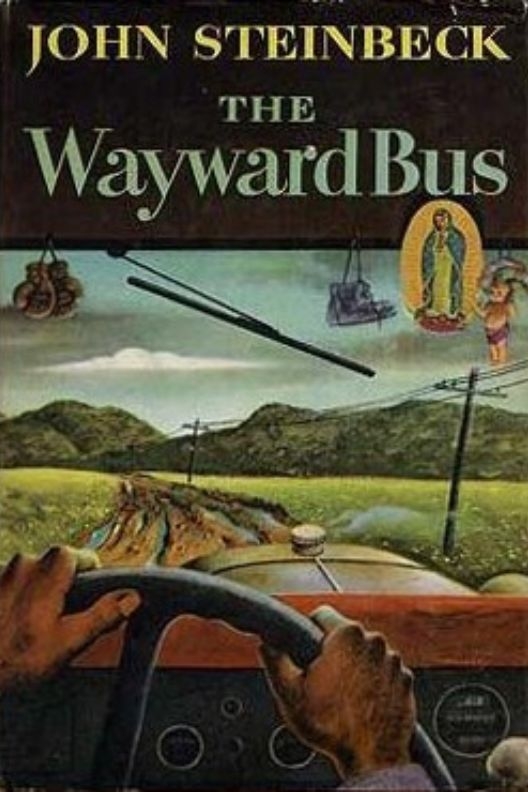
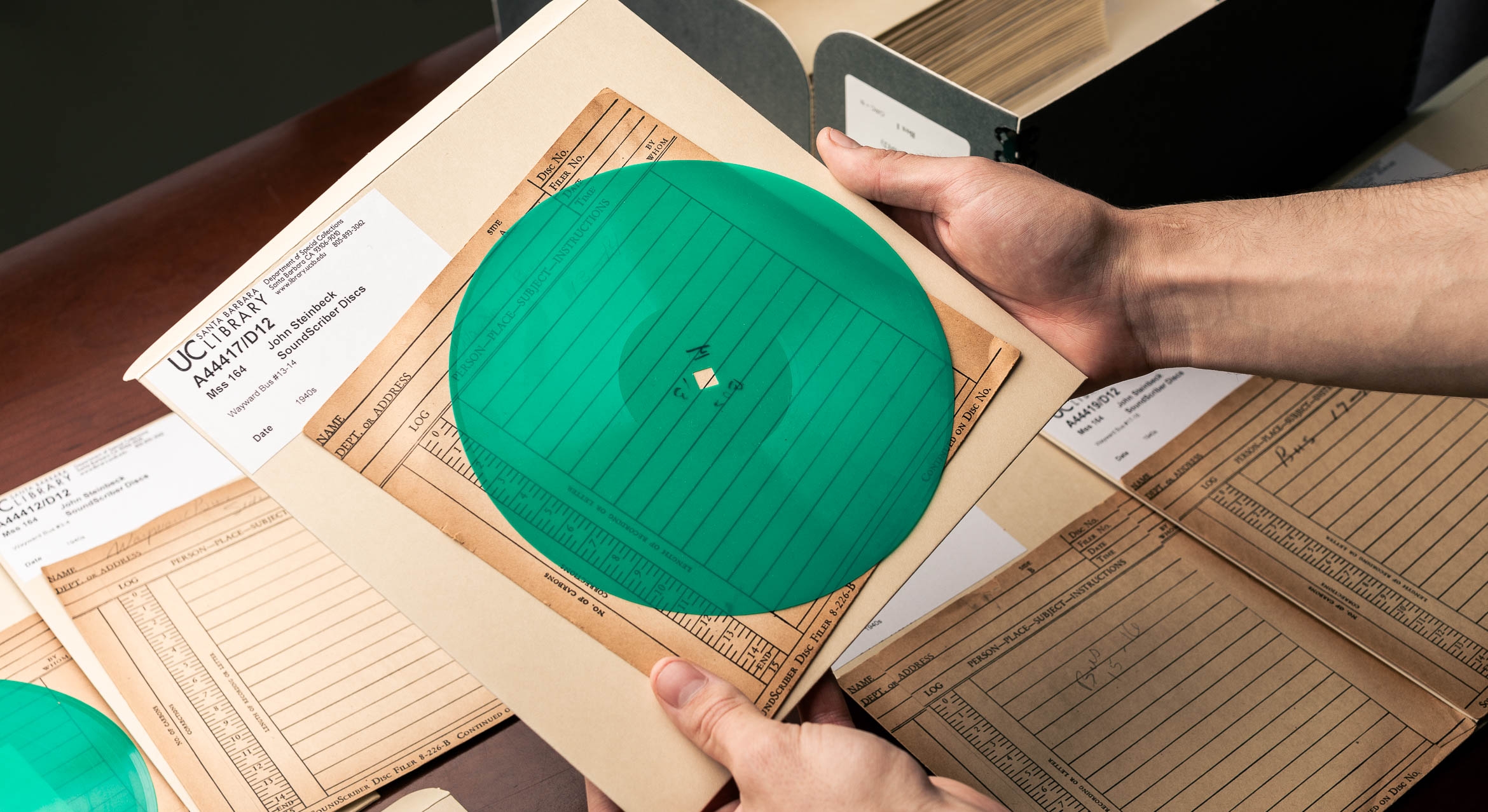
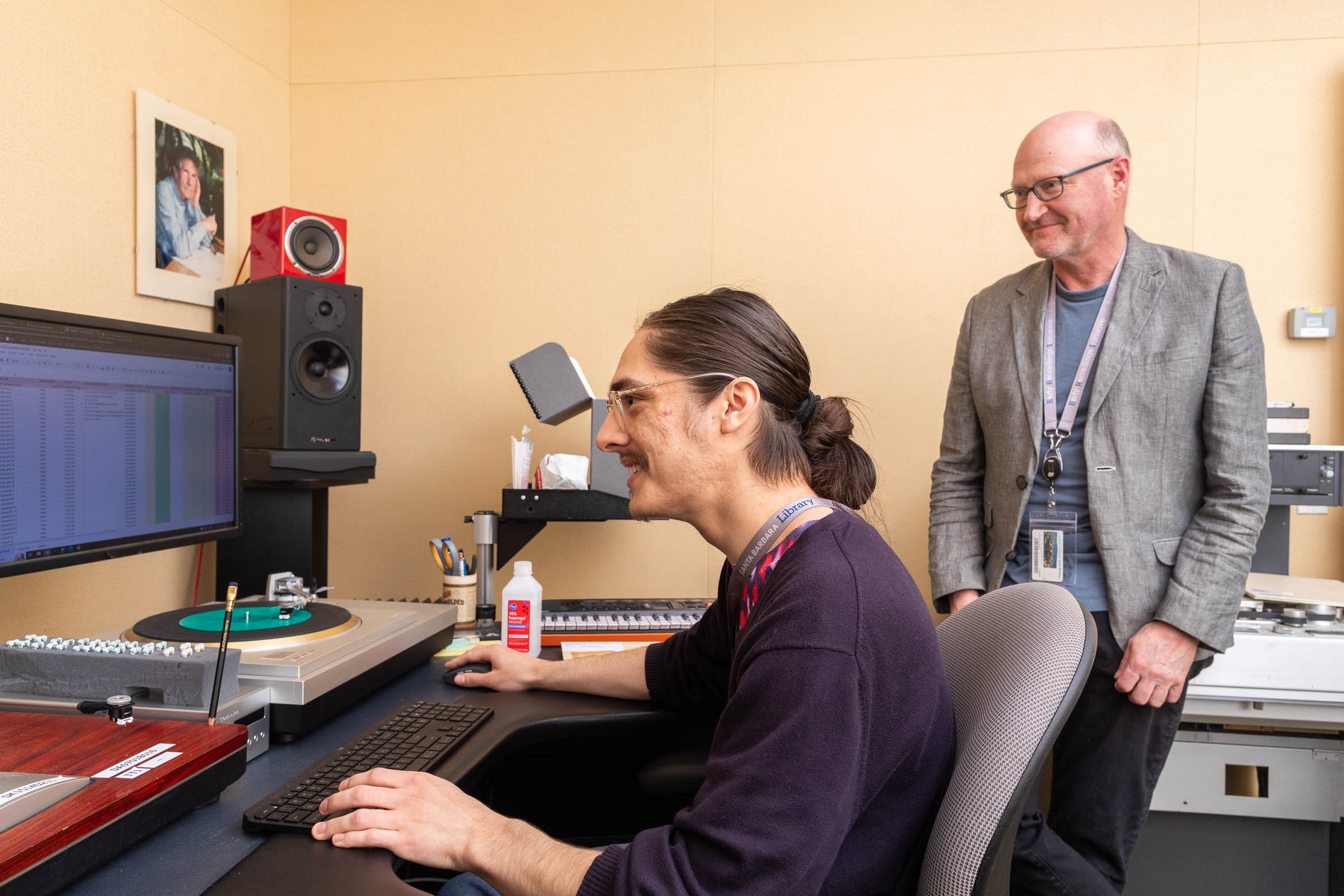
In his dictation of “The Wayward Bus,” Steinbeck narrates slowly and with careful articulation, his tone wistful. The collection also includes a five-minute recording from October of 1947 for “an idea for a motion picture based on and using the witch trials of Salem as historical matter,” Steinbeck says. “It is intended to be . . . a film treatise on public hysteria and prejudice.” He also includes a notation for the transcriptionist to type it up in triplicate, adding, “I would like to turn it over to the author’s guild tomorrow.”
Before donating the disc collection to the library, Maxson had it appraised by Ralph Sipper, a Santa Barbara-based rare book dealer for more than 50 years. “Mark’s entire collection is certainly significant,” Sipper said. “He’s a major player, a serious collector. This is top-of-the-market material.”
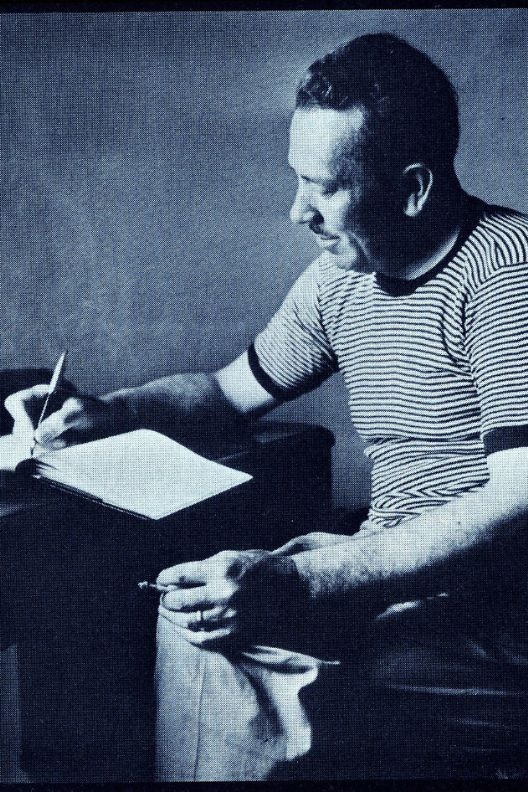
‘All of his major works’
Maxson also consulted Sipper on his recent donation of 26 Steinbeck books and two reel-to-reel recordings. Among the books, all are first editions except a 1991 reprint of “Tortilla Flat,” and include “all of his major works,” Maxson said, from fictional favorites “Of Mice and Men” and “The Grapes of Wrath” to “Cannery Row” and “East of Eden,” plus important works of nonfiction, such as “The Log from the Sea of Cortez,” “Travels with Charley” and “America and Americans.”
On a personal note, Maxson said his favorite Steinbeck book is “The Short Reign of Pippin IV: A Fabrication,” a 1957 novella of political satire set in France. “It’s very telling of our politics today.”
With the book delivery in October, Mark and Mary also dropped off reel-to-reel recordings of a 1954 reading for the United Nations Radio Division and Steinbeck's dictation of "The Affair at 7, Rue de M,” a short horror story from 1955 about a boy chewed by his own bubblegum.
Mark and Mary included a $10,000 gift to help cover the cost of preservation and digitization. For decades, the couple has donated annually to UC Santa Barbara, mostly in support of the women’s rowing team. In October, Mark started a three-year term on the UCSB Foundation’s board of trustees.
The book collector
During that summer of 1974, Maxson was offered a job by a family friend to run the beer concession at the Salinas Rodeo. For extra hands, he recruited crewmates from the rowing team.
“When we weren’t working the rodeo, we’d venture out into town,” Maxson remembered. “One morning, I happened upon a garage sale where I found that copy of ‘The Winter of Our Discontent.’ It was in really good shape, so I bought it.”
While Maxson had grown up a fan of Steinbeck’s most famous novels and novellas, he said he was mostly drawn to the book by the dust jacket art by Elmer Hader, the American artist who had also illustrated “The Grapes of Wrath,” “East of Eden” and “The Long Valley.”
Such first edition cover art often represents “the author’s original vision most fully, in terms of design elements and layout,” said curator Gartell. “With rare exceptions, the first edition of a work is how it originally met its audience. The physical book and the choices made in its presentation, such as illustrations, were products of a cultural context that might have changed dramatically by the time a new edition was produced.”
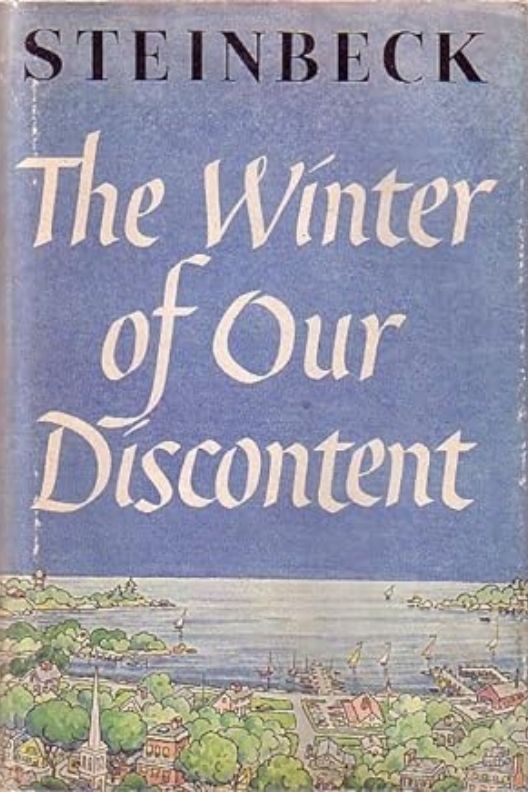
Early on, Maxson got hooked on perusing garage sales, estate sales, used bookstores and thrift stores. As his interest and collection grew, he started bidding at auctions, as well, and searching online. Over the decades of buying, selling and trading, and swapping out books with ones of higher quality, his collection evolved from first editions to first editions with dust jackets. Slowly he would add the ultimate pieces — well-preserved first editions in their original dust jackets, inscribed and signed by John Steinbeck.
These days, even after his donation to UCSB, his collection tops 100 books, his most prized a copy of “The Pearl” signed by the author and inscribed to his friend Ed Ricketts, the immortalized marine biologist and philosopher of Cannery Row. Maxson purchased it at auction in 2006 from PBA Galleries Auctioneers & Appraisers; he was told it had belonged to Ricketts’s son.
That book, Maxson says, will remain in his possession. Same with that first edition of “The Winter of Our Discontent” he picked up 50 years ago at a garage sale in Salinas.
